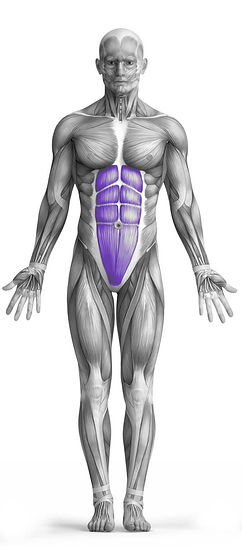Dumbbell Side Bends 101 Video Tutorial
0

Exercise Synopsis
Target Muscle Group
Abs
Secondary Targets
None
Execution
Isolation
Force Type
Pull
Required Equipment
Dumbbell
Fitness Level
Beginner
Variations
None
Alternatives
None
Timer
Hour
Minute
Second
Stopwatch
00:00:00:00
Overview
The Dumbbell Side Bend is a simple yet effective exercise designed to target the oblique muscles in the abdominal region. It focuses on improving core strength, stability, and flexibility by engaging the sides of the waist through lateral movement. Performed with a single dumbbell, this exercise requires standing upright with feet shoulder-width apart, holding the dumbbell in one hand while the other rests on the hip or extends for balance. The movement involves bending sideways toward the dumbbell, feeling the stretch on the opposite side, and then returning to the starting position. It is an isolation exercise, meaning it solely targets the obliques without significant involvement of other muscle groups, making it ideal for those looking to enhance their core definition and symmetry.
How to Perform
Hold a dumbbell in one hand, letting it hang naturally by your side, with your palm facing your body. Keep the other hand resting on your hip or extended for balance.
Stand tall with your feet shoulder-width apart, ensuring a stable base. Maintain a straight posture with your chest up and your gaze forward throughout the exercise.
Slowly lean your torso to the side, lowering the dumbbell toward the floor. Focus on engaging the oblique muscles on the opposite side of your body as you feel a stretch along the side you're bending.
Return to the upright position in a controlled manner, avoiding any jerky movements or momentum.
Without resting at the top, repeat the movement on the other side by switching the dumbbell to the opposite hand or keeping it in the same hand, depending on your workout plan.
Perform the desired number of repetitions, ensuring each bend is slow and deliberate to maximize muscle activation. Avoid excessive bending or twisting to prevent strain on the lower back.
To enhance effectiveness, breathe out as you bend sideways and inhale as you return to the starting position.
★ Bonus: For exercises that involve external weights (such as dumbbells, barbells, or machines), the One Rep Max (1RM) calculator can help you estimate your maximum lifting capacity. Use it to track your strength progress and adjust your training for optimal results.
Tips
Maintain an upright posture throughout the exercise, ensuring your back stays straight and your gaze remains forward.
Focus on bending at the torso rather than your hips or lower back, isolating the movement to your upper body.
Pay attention to the contraction and stretch of your oblique muscles along the sides of your waist as you move.
Keep the dumbbell close to your body to prevent unnecessary swinging and ensure better control.
For variation, you can perform this exercise while seated on the edge of a bench, keeping your feet flat on the ground for stability.
How Not to Perform
Avoid Rounding Your Back: Do not allow your back to curve forward or round as you bend. Keep your spine neutral to avoid straining your lower back.
Don’t Use Momentum: Resist the urge to swing your torso from side to side. Focus on controlled, deliberate movements to ensure the obliques are doing the work and prevent wasting energy.
Don’t Overextend: Avoid bending too far in either direction. Excessive range of motion can lead to overstretching or injury. Only bend as far as your flexibility allows without compromising form.
Don’t Twist Your Torso: Keep your torso facing forward and avoid twisting your upper body as you bend. Twisting can engage muscles you’re not targeting and strain your spine.
Avoid Holding Your Breath: Breathe steadily throughout the exercise. Inhale as you return to the starting position and exhale as you bend to the side. Holding your breath can increase tension and reduce your control.
Don’t Let the Dumbbell Swing: Keep the dumbbell close to your body and avoid letting it swing away from your side. This will help you maintain control and target the obliques more effectively.
Avoid Leaning Forward or Backward: Make sure you don’t lean too far forward or backward as you bend. Keep your torso aligned with your hips to ensure the movement is focused on your obliques.
Don’t Rush the Movement: Perform each repetition slowly and with control, rather than rushing through the set. This ensures maximum muscle activation and minimizes the risk of injury.
Variations
Variations of fitness exercises refer to different ways of performing a specific exercise or movement to target various muscle groups, intensities, or goals. These variations aim to challenge the body differently, prevent plateaus, and cater to individuals with varying fitness levels.
Alternatives
Alternative exercises in fitness refer to different movements or activities that target similar muscle groups or serve the same training purpose as the primary exercise. These alternative exercises can be used as substitutes when the original exercise is unavailable or challenging to perform due to various reasons such as equipment limitations, injuries, or personal preferences.








